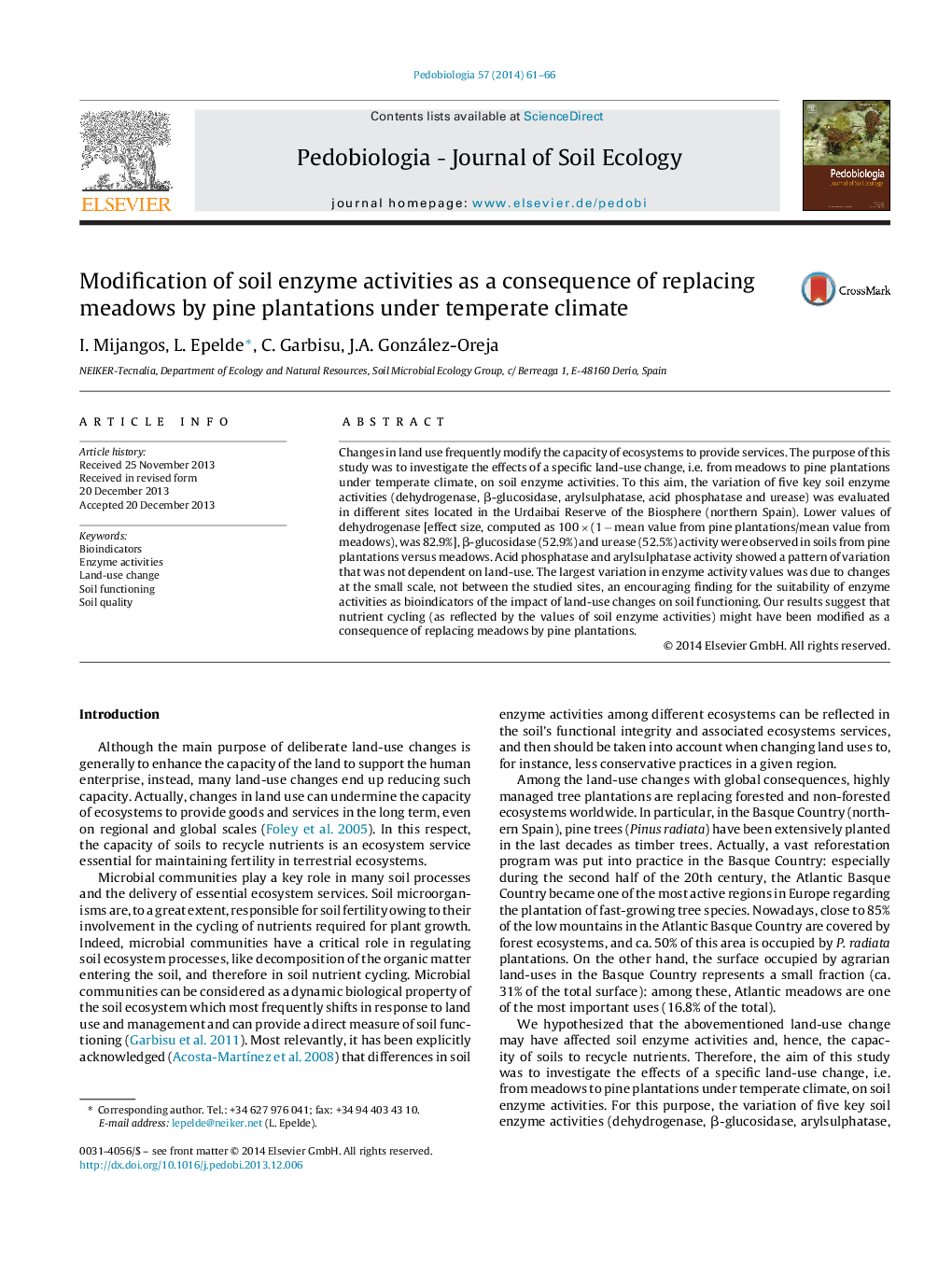| Article ID | Journal | Published Year | Pages | File Type |
|---|---|---|---|---|
| 2061438 | Pedobiologia | 2014 | 6 Pages |
Changes in land use frequently modify the capacity of ecosystems to provide services. The purpose of this study was to investigate the effects of a specific land-use change, i.e. from meadows to pine plantations under temperate climate, on soil enzyme activities. To this aim, the variation of five key soil enzyme activities (dehydrogenase, β-glucosidase, arylsulphatase, acid phosphatase and urease) was evaluated in different sites located in the Urdaibai Reserve of the Biosphere (northern Spain). Lower values of dehydrogenase [effect size, computed as 100 × (1 − mean value from pine plantations/mean value from meadows), was 82.9%], β-glucosidase (52.9%) and urease (52.5%) activity were observed in soils from pine plantations versus meadows. Acid phosphatase and arylsulphatase activity showed a pattern of variation that was not dependent on land-use. The largest variation in enzyme activity values was due to changes at the small scale, not between the studied sites, an encouraging finding for the suitability of enzyme activities as bioindicators of the impact of land-use changes on soil functioning. Our results suggest that nutrient cycling (as reflected by the values of soil enzyme activities) might have been modified as a consequence of replacing meadows by pine plantations.
